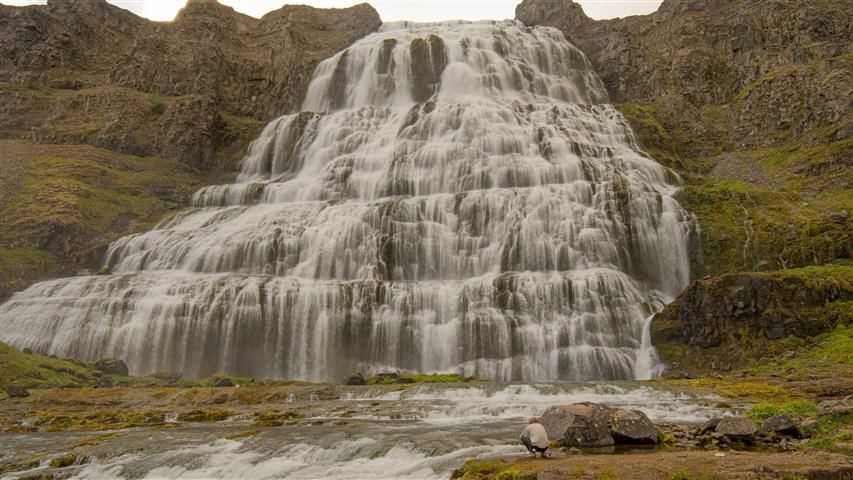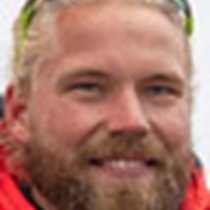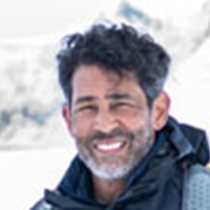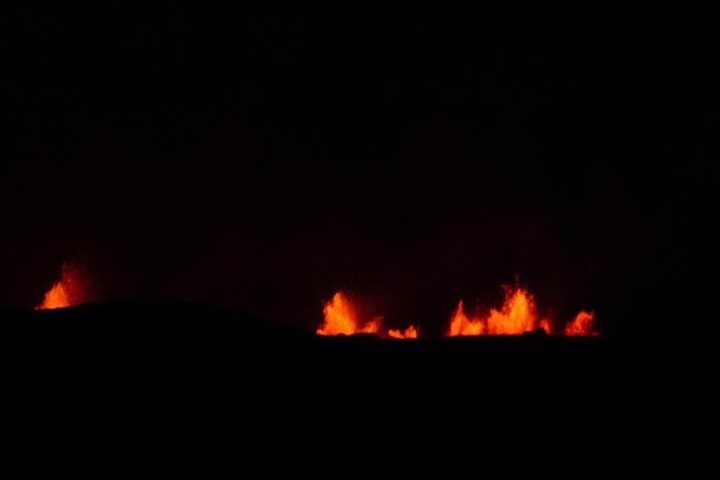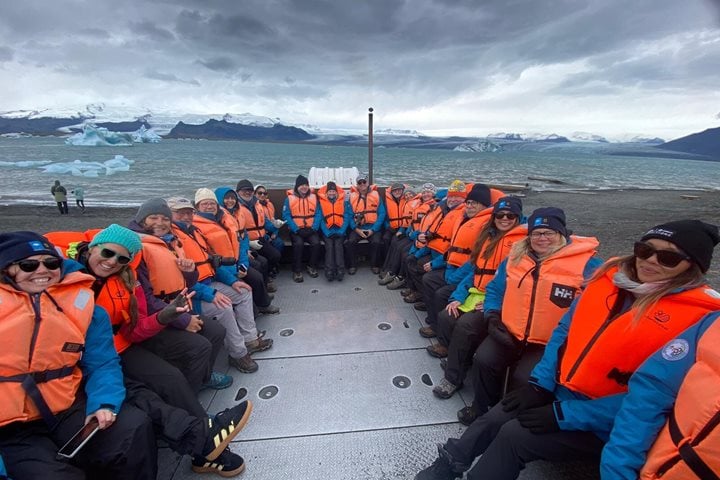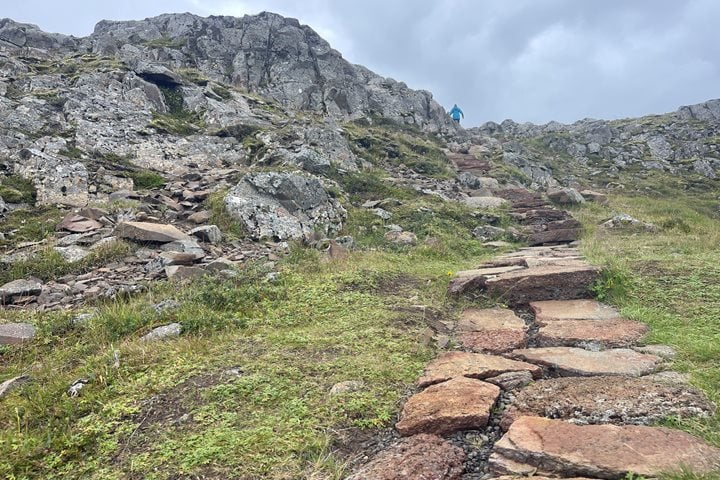Our guests hiked to the Dynjandi Waterfall this morning and experienced breathtaking views. The waterfall begins at 330 feet in elevation, then cascades down on the horizontal layered volcanic lava flows. In between the black colored basaltic lava flows, we found red baked soil. Once a lava flow cools off and settles into solid rock, plants are able to grow. Over time, the organic material will form soil, and when a new lava flow flows on top of this soil, the heat from the lava, which could be greater than 1,100 degrees Celsius, bakes the soil into brick. The iron in the soil gets oxidized in this process and assumes a bright red color.
After spending the morning with the waterfalls, we repositioned National Geographic Explorer to our afternoon destination at Vigur Island. Before arriving, however, guests enjoyed presentations given by our naturalist Javier Cotin and Global Perspectives guest speaker Silja Omarsdottir.
Vigur Island is a tiny little island located in Ísafjarðardjúp, a larger fjord in the Westfjords region of Iceland. This island has been home to a family of farmers that goes back seven generations, each of which has collected eiderdown from the nests of the densely populated eider duck on the island.

